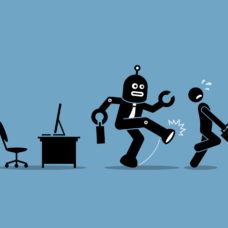A group of scientists taught a quantum computer how to see trees from satellite and aerial photographs. Ironic as it may sound, the most advanced computer created by a human can only just now recognize one of the most common organisms found in nature.
For computers, objects are raw data which will then have to be interpreted and understood, which is easier said than done. Teaching computers to correctly see in their environment and recognize common objects is the subject of intense research in AI and the machine’s continued deep learning.
Training a Quantum Computer to Recognize and Classify Trees
Led by physicist Edward Boyda, scientists at St. Mary’s College in California trained a quantum computer to recognize and classify trees from aerial imagery of California.
The researchers used the D-Wave 2X (with a 1,152 qubit processor) and fed it with hundreds of NASA satellite images. The D-Wave was then tasked to consider hue, saturation, light reflectance and dozens of other features to detect trees.
So that the system learns from its mistakes, researchers evaluated its classifications of trees, telling it where it was right or wrong. In a paper published in the PLOS ONE journal, the team reports an accuracy of 90% in recognizing trees based on satellite imagery of Mill Valley, California.
Conventional computers are not so far behind regarding accuracy. Yet, unlike quantum computers with a deep learning AI, most computers can’t readjust and learn from failure.
Edward Boyda and his St. Mary's team trained a quantum AI to recognize trees from aerial photography.Click To TweetThis development is a step forward towards the practical use of quantum computers and AI systems for computer vision, with a wide range of civilian and military applications: robotics object recognition, assistant systems for the blind, navigation systems (mobile robots and autonomous cars), industrial inspection machines and automatic visual surveillance.
The Tree of Knowledge of Good and Evil
The human brain establishes a concept of what a tree is and learns to perceive a set of criteria associated with that concept. Even if some of these criteria are absent, it would still recognize a tree when it sees one. Unlike humans, for an AI to recognize a tree without error, it must analyze thousands of tree pictures, distinguish and memorize size, hue, light reflection and all the possible features of a tree.
The main objective of AI is to supplement the human. An AI should simplify tasks and take the grunt work out of human interaction with the environment.
According to the Judeo-Christian allegory, God put the Tree of Knowledge of Good and Evil in the Garden of Eden to test them.
Now the tables have turned.
As the creator of AI, does humankind, after having taught computers to recognize the “tree,” give them a choice to disobey their creator? If God had not given this choice to Adam and Eve, they would have been like robots, simply performing the tasks for which they were programmed.
In the same way, man will inevitably create an unhinged AI. A freer, multipurpose AI will have the ability to make influential decisions. Should we expect disobedience? As an omnipotent force, God knew in advance what would be the consequences of the original sin. “Quantum sins,” however, belong to the realm of the unknown.



















Are they yet sure of whether or not computers like the d-wave are actually doing quantum calculations? Last I read they weren’t sure